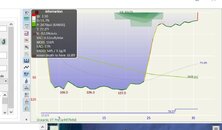CMAS *** does. It's supposed to teach enough deco theory and in-water skills to qualify the student for light backgas deco.
I knew CMAS did but wasn't sure at what level so didn't mention it
Back to the thread.
The reality is that the vast majority of divers only retain the skills and knowledge that is applicable to the type of diving they do.
I often come across people with 500+ dives that have get bamboozled by a simple gear issue (say leak at first stage) because they always valet dive and have forgotten what they were taught years ago, because it's simply "not important to them" Or people who I know have been taught how to assemble their kit and been able to do it well, simply forget and look confused at which way their 1st fits to the cylinder or put their bcd on backwards or upside down.
Don't laugh it happens with alarming regularity
Even if you're taught basic deco, someone who doesn't see their comp go into deco until a few years later will probably "have a flap"
I personally would like to see divers taught more about gas planning etc before they go to 30m/100'. Have them be able to make a rudimentary stop near a line in OW while carrying out a mask flood and clear, and be able to shoot a dsmb from 10m or more and be able to work out ther SAC etc etc.
I can teach it and make sure they can make the required standard, but I can't make them practice the skills nor retain all the info so that even 6 months later they could pass the same tests.
Search for threads on check dives and see how much pushback there is from people believing it's beneath them and a waste of their vacation dives etc etc
Rock hard place or horse to water and all that




